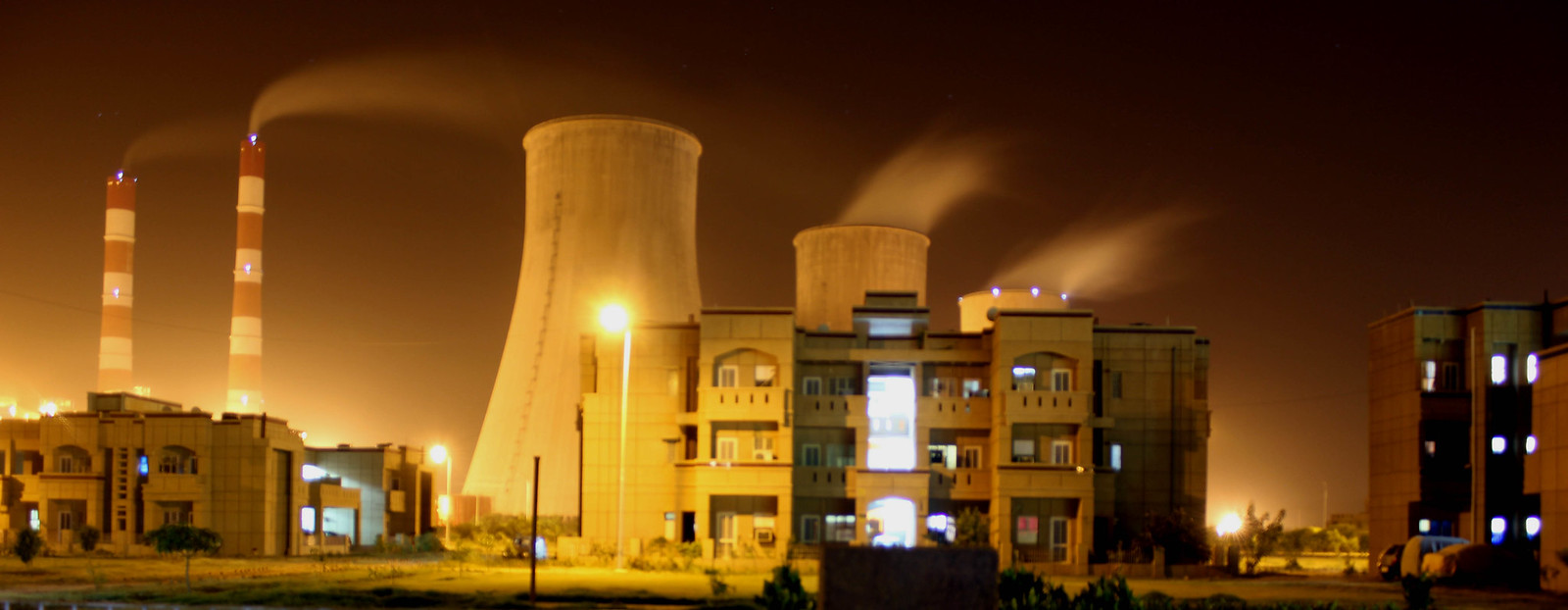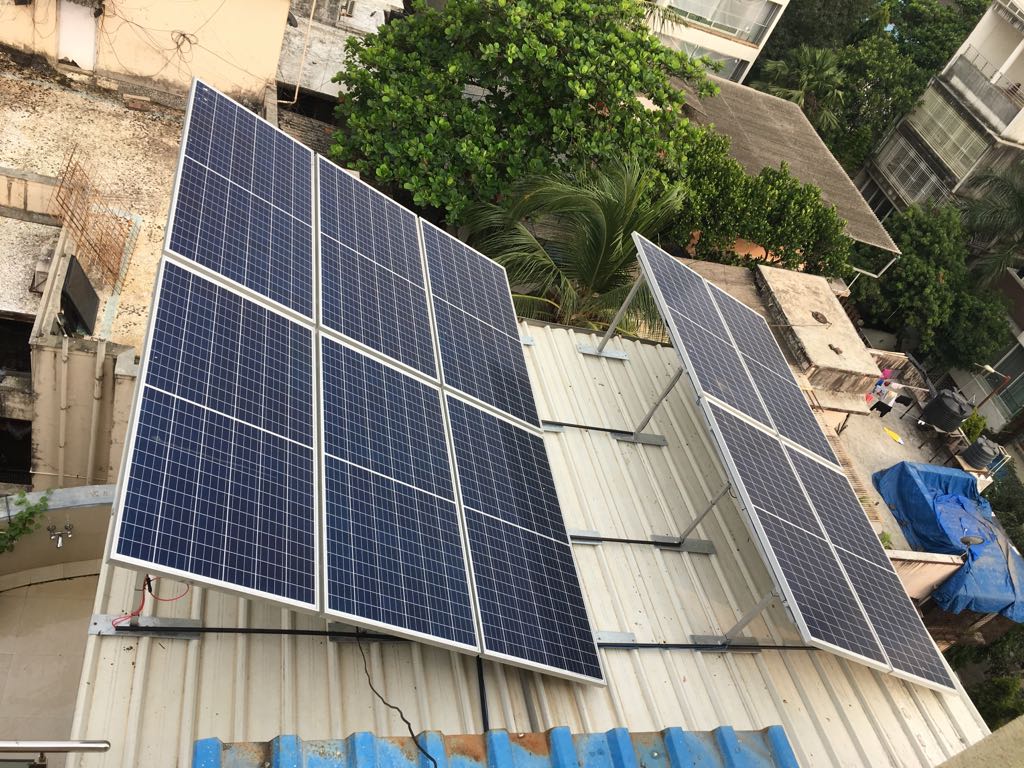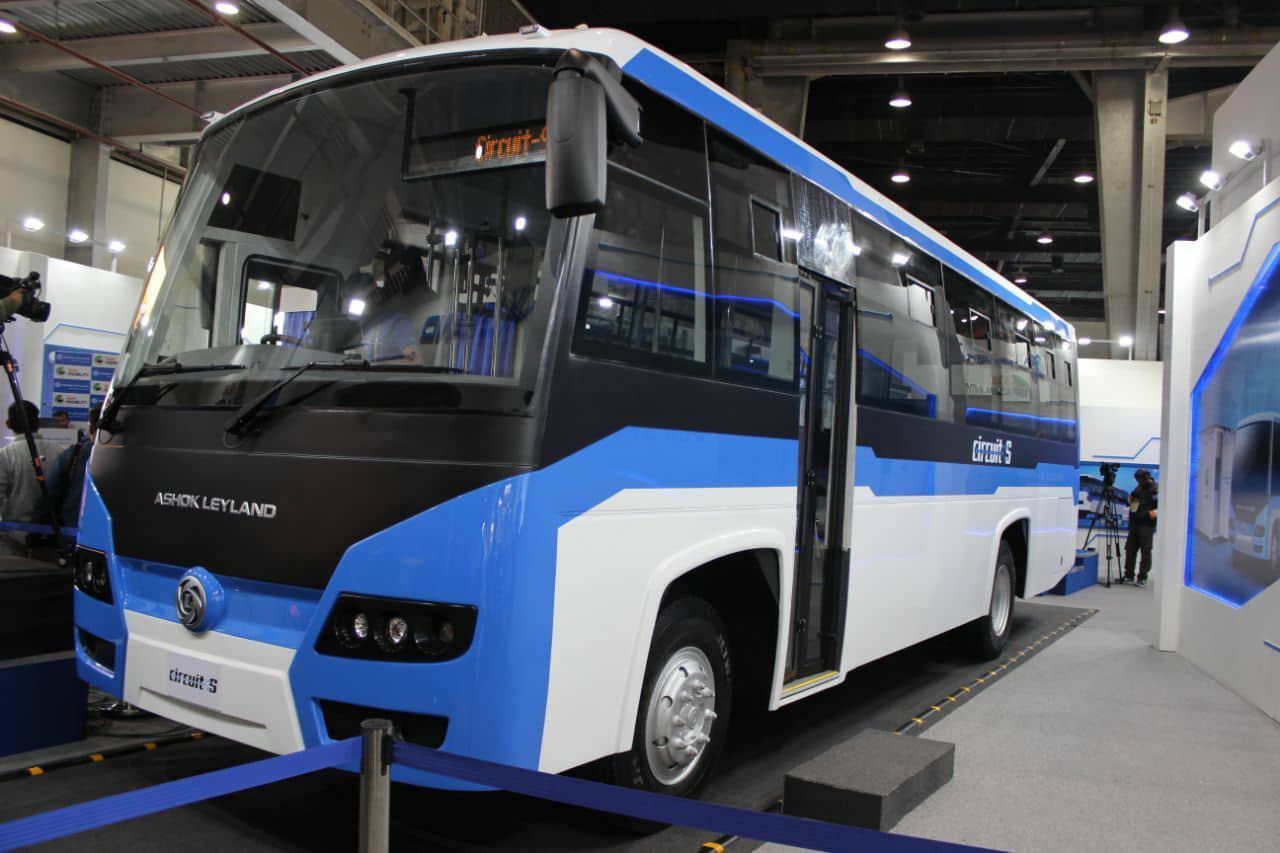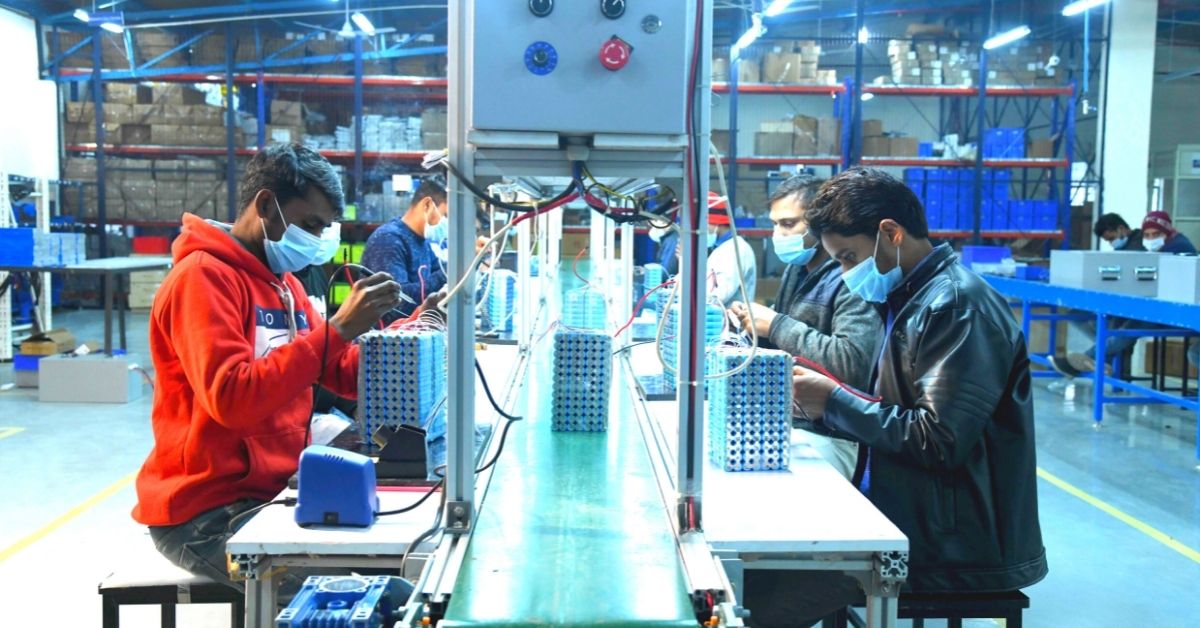Can EVs be Truly Sustainable in India? Experts Say Yes, if We Cross These 4 Hurdles
Is merely switching from petrol/diesel to electricity enough to challenge air pollution? How do you source the electricity required to power these vehicles? We explore all questions around sustainability of electric vehicles.

This article is part of a deep dive into Electric Vehicles in India. #EVinIndia is the first chapter of ‘Shaping Sustainability’, an exclusive series by The Better India to give our readers an in-depth understanding of how Indians are making sustainability a priority in all walks of life. Find more stories from the series, here.
In India, the push towards greater adoption of e-mobility has largely come from governments through new policies and subsidies (for example, the FAME-II scheme).
During a virtual event organised by industry body FICCI in October 2021, Union Transport Minister Nitin Gadkari announced that the Union Government wants electric vehicle (EV) sales penetration for private cars to reach 30% by 2030. He further stated that if EV penetration reaches 40% in two and four-wheeler segments and nearly 100% for buses by 2030, India could cut its crude oil consumption by approximately 156 million tonnes worth Rs 3.5 lakh crore.
Similarly, the Council on Energy, Environment and Water (CEEW), a Delhi-based non-profit, also claimed in their November 2020 report that if EVs made up 30% share of India’s new vehicle sales by 2030, the impact could be very significant.
It read, “With the reduction in oil demand from the passenger road transport sector, India will save on crude oil imports worth Rs 1,07,566 crore (USD 14.1 billion). Further, a 17% decrease in particulate matter and NOx emissions, 18% reduction in CO2 emissions, and 4% reduction in GHG emissions relative to BAU [business as usual] can be expected.”
The report also noted that such EV penetration could raise the market size of powertrain, battery and public chargers to over Rs 2 lakh crore, besides creating 1,20,000 new jobs in the sector. Although these are optimistic figures, they highlight the immense potential benefits that could be accrued to Indians if they transitioned from internal combustion engine vehicles to their electric counterparts.
In the past decade, the push for EVs has encouraged multiple startups and existing players in the automobile and renewable energy sector to deliver solutions for the e-mobility ecosystem, whether it’s to manufacture vehicles, assemble batteries or build charging stations, among other aspects.
Prima facie, the push for e-mobility over their internal combustion engine-based counterparts is a serious attempt to address the problem of vehicular pollution.
But going beyond the surface, it’s evident that the EV sector in India and around the world isn’t all that green. Merely switching from petrol to electricity isn’t enough. There are issues ranging from sourcing the electricity required to power these vehicles, to the extraction of rare earth minerals for the construction of batteries, to reusing and recycling them.
So, how do we make this transition to EVs more sustainable in the future?
Calculate Running Cost of EV & Fuel Vehicle
 Fuel Vehicle
Fuel Vehicle
 Electric Vehicle
Electric Vehicle
 Fuel Vehicle
Fuel Vehicle
 Electric Vehicle
Electric Vehicle

Total Savings
No Savings
Power Source
In his 2020 Master’s thesis titled ‘Life Cycle Assessment of Electric and Combustion Vehicles in India’, which he submitted to the University of British Columbia, researcher Narayan Gopinathan states that the benefits of electrifying the transport sector “are blunted by the high carbon intensity of the energy that comes from the power grid”. He adds, “As the grid adds renewable energy capacity and becomes less carbon-intensive, the benefits of electrification will increase further when compared to gasoline and diesel-powered vehicles.”
Today, coal accounts for more than 70% of India’s electricity output. The push for EVs means rising demand for electricity. This will only add to the dangerous volumes of emissions from coal-based thermal power plants, thus defeating the purpose of EVs in tackling air pollution.
Speaking to The Better India, Sunil Dahiya, an analyst with Centre for Research on Energy and Clean Air (CREA), says, “Tailpipe emissions in cities like Delhi may recede, but what about the people living in the coal-mining districts of Jharkhand, Chhattisgarh and Madhya Pradesh, and those residing in the vicinity of thermal power plants, whose health suffer because of the heavy air pollution caused by these activities? Given our rising electricity needs thanks to EVs, we are forcing them to mine and subsequently burn more coal which translates to greater air pollution from coal-based power plants, serious health ailments and other socio-economic issues.”

His solution to meet this rising demand is transitioning to cleaner energy, particularly solar energy. More energy, he argues, needs to be generated from rooftop solar, requiring the solarisation of the metro rail tracks, metro stations, roads, government buildings, train stations and wherever public land is available in the cities or at the consumption hub.
“We should try and generate maximum potential electricity within the city through renewable sources so that transmission losses are done away with, and all this new demand created by the electrification of the transportation sector can be fulfilled within cities like Delhi and Bengaluru. In other words, we should generate renewable energy in the city or at the place where it’s being consumed instead of asking coal mines and power plants to pollute and create health hazards for counties living next to them and away,” argues Sunil.
Of course, this may not fulfil the total energy demand in a given city today and they will continue to depend on coal-based power plants to meet them for the time being.
Till this time, coal-based power plants generating electricity have to put in place a state of the art efficient pollution control technology mechanisms to strictly control the emission of particulate matter and other pollutants. Although this is not beyond the realms of possibility, recent history suggests a serious lack of compliance from coal-powered plants.
In December 2015, the Union environment ministry issued a stricter emission standard notification, which required each thermal power plant to install a flue gas desulfurizer (FGD) that controls toxic emissions of sulphur dioxide (SO2), among a variety of other measures. However, according to a CREA report published in December 2021, a majority of thermal power plants in the country are yet to retrofit SO2-control technology six years later. Despite such concerns, Sunil seems optimistic about what the future holds for electricity generation in India.
“We are already transitioning to renewables. Coal began to see vulnerable times ever since the cost of renewable sources like solar started falling sharply in the past five years. Today, the cost of generating 1 unit of electricity from renewable energy sources is under Rs 2, whereas the average unit cost of electricity from burning coal is around Rs 3.5-Rs 4 in existing power plants. If you look at the new coal-based power plants, which are being set up now and in the future, the average cost of generating 1 unit of electricity is not going to be below Rs 6,” he claims.
Thus it makes sense for policymakers to go for cheaper power generation options, i.e. renewables. Given the rising public concern over air pollution and the global pledges India has made on climate change, Sunil argues that the social and environmental costs associated with coal-based electricity will be internalised into the cost of coal.
Moreover, last November, Prime Minister Narendra Modi pledged to the world at the COP26 Summit in Glasgow that India will increase its capacity of non-fossil energy to 500 GW and meet 50% of its energy requirements through renewable energy by 2030
“If we can fulfil this pledge, CREA anticipates that the demand for coal to generate electricity will increase till 2026, following which it will start declining. By then, the installation of renewable energy will overtake the growth in the demand for coal. By 2030, the amount of coal burned to generate electricity will be equivalent to the amount burnt in 2020 despite the far higher electricity demand. We still see a bit of growth in coal usage for the next four or five years, but after that, we will start seeing a decline, particularly in power generation,” claims Sunil.
So, the massive push for EVs in India today will, in the short term, put additional pressure on coal-based power plants to generate more electricity. But in a few years, these fears will be laid to rest according to clean air experts like Sunil and others optimistic about e-mobility. Take the example of Bengaluru. According to this report in the Deccan Herald, “more than half the power supplied by Bescom for Bengaluru comes from renewable energy.”

Public Transport Over Cars
As per this report, 3,29,190 EVs were sold in India last year, which represents a 169% increase over the previous year’s sales of 1,22,607 units. Of the total units sold last year, two-wheelers and low-speed L3 category three-wheelers made up 90% of it.
Although the second phase of the FAME India scheme also focuses on electrifying India’s public and shared transport systems through various subsidies for e-buses and e-auto rickshaws, the numbers and larger public discourse suggests a greater emphasis on private bikes and cars.
“The proportion of how much State support is going to public transportation versus individual means of transport needs some reconfiguring. If we pursue the current model of aggressive growth in the EV sector, we might end up in a situation where we may do away with vehicular pollution in cities from IC-engine vehicles, but the sheer number of individual cars or two-wheelers will rise further. Besides air pollution, the other major problem with the transport sector in India is poor space utilisation on our roads given the rising number of private vehicles and this results in the creation of more flyovers and parking ways,” explains Sunil.
If we look at better transport management policies and studies across the globe, there exists a very hybrid model which largely disincentives private modes of transport. Public transportation in the form of buses, metro rail or trams and NMT (Non-Motorised Transport) options such as cycling and walking play a bigger role here. A good example is London, where if you enter certain areas, there are higher entry and parking charges for private vehicles. Similarly, if you look at South Korea, there are greater incentives for people to use public transportation rather than private transport.
According to the World Resources Institute (WRI) India, “Cities like Santiago have proved that a scaled transition to electric buses is possible and provides benefits in the form of savings in operations and engine maintenance costs to the tune of 70% as compared to diesel buses.”
Meanwhile, Sunil says, “The shift to EVs is largely a good thing. But promoting EVs for public transportation is the best way forward, and that should be prioritised over individual electric cars or bikes for every individual. The transition to renewable energy and electric vehicles should happen simultaneously. We shouldn’t wait for one before embarking on the other.”

Recycling Lithium-Ion Batteries
More scope for sustainability in this field is to look at the heart of EVs that are powered by lithium-ion batteries. These batteries are largely assembled, not manufactured, in India, given that OEMs in India are dependent on imports for battery cells. But the Government of India in May 2021 announced an Rs 18,100 crore production-linked incentive (PLI) scheme for the manufacturing of Advanced Chemistry Cells (ACC) to encourage Indian corporations towards developing battery manufacturing domestically.
More concerning, however, is the human and environmental costs attached to lithium-ion batteries. Extracting raw materials, mainly lithium and cobalt requires large quantities of energy and water. Moreover, there have been well-documented instances of the use of child labour in these mines where rare earth minerals like cobalt are extracted.
Given these concerns, experts have looked to recycle and reuse the batteries that no longer meet the requirements of automotive applications. But India does not have a policy framework for lithium-ion battery recycling, although the government has announced that it’s in the process of framing one. More worryingly, many experts estimate that no more than 5% of lithium-ion batteries are currently getting recycled in India.
Rajat Verma, the CEO of Lohum, a Noida-based integrated lithium-ion battery manufacturer and recycler, speaks about the process of recycling. As a first step to building the Li-ion circular ecosystem, Lohum has a dedicated battery collection centre that gets a continuous supply of end-of-life batteries from a network of responsible suppliers. The company has multiple partners and OEMs that help it collect the batteries.
The process begins by picking up the battery at the point of disposal. From there, it has to be transported safely to a processing hub. It’s important to emphasise the safety aspect here because Li-ion batteries are known to be very hazardous. Entities engaged in recycling need people who are qualified to transport them.
“We barcode batteries at the point of collection to ensure there is full traceability of a battery pack throughout its disposal. From there, the battery reaches the processing centre, and then the battery needs to be dismantled. Different batteries are made in different ways. There are very large car batteries with lots of modules inside them and small two-wheeler batteries, which are cell-to-pack batteries. The process of dismantling these batteries requires a lot of skill because you have to take care of electrical or fire hazards,” explains Rajat.
Once dismantled, you have individual battery cells or modules. The preferable option is to reuse them. Reuse is an important facet here because two of the highest costs that go into the creation of Li-ion battery packs is the process of extracting the chemicals and rare earth minerals from mines and the actual process of creating a cell. Both are very energy-intensive and environmentally unfriendly processes.
“We want to leverage whatever energy went into making them and extract the maximum possible life out of that battery. We prefer a second life because the same input energy gets amortised over a much longer life. A second life battery means taking back battery packs from the market, harvesting the good cells from them and putting them back into EVs or a stationary energy storage system application like an inverter battery,” says Rajat.

Gopinathan’s 2020 thesis noted that the reuse of the battery for grid storage could greatly improve the environmental outcomes of the EV sector.
“In addition, it should enable the development of a second life battery supply chain so that the batteries that are at the end of their vehicular lives can be repurposed for grid storage. This will maximise the environmental benefits of this transition and enable the country to reduce its GHG footprint to the greatest possible extent while enabling its people to enjoy the full benefits of modern energy and transportation services,” the study said.
But the process of recycling has many different steps involved, broadly categorised into two processes — pyro-metallurgical process and hydro-metallurgical.
The former requires very high temperatures, usually running north of 1500 degrees Centigrade, which means consuming a lot of energy and losing material in the process. Li-ion batteries contain a lot of carbon inside them in the form of graphite. In very high temperatures, graphite tends to burn and releases dangerous emissions into the air.
The hydro-metallurgical process, on the other hand, largely functions at room temperature or twice that. This process is fairly less energy-intensive. It begins with shredding, where the non-useable battery cells are shredded to separate plastics, copper and aluminium foil from the black mass. This is combined with a hydrometallurgical process that produces lithium, cobalt, nickel, manganese, and graphite to be re-used in new batteries or other industrial applications.
“While recycling, you’re trying to separate different elements that are inside the battery and maximise the amount of those elements that you recover. This separation process can be divided into two sub-processes — mechanical and chemical separation. Recyclers must ensure that they use less toxic chemicals and can recover all the additional chemicals that they introduced into the recycling process,” says Rajat.
Lohum exports the remaining lithium, cobalt, nickel and graphite to battery cell manufacturers outside India. However, they are hoping that battery cell manufacturing in India gets commissioned by next year, following which they will provide these elements to ventures here.
“One thing that we’re very careful about when dealing with Li-ion batteries is that they contain different fluoride compounds. As you know, fluoride is an atrocious material to work with and can be very toxic for human beings and the environment. If your process does not clearly outline what they are doing with fluoride, it’s a sham. The value of that recycling activity completely goes away if fluoride gets introduced to the environment,” he notes.
To ensure this process has any tangible environmental benefits, compliance is key. Before issuing recycling licences, public authorities must ensure that the processes undertaken by candidates are fully compliant with all these parameters.
However, an industry insider, who didn’t wish to be named, says that environmental compliance has devolved to state pollution control boards from the central pollution control board (CPCB).
“These bodies don’t have the requisite funds to enforce compliance, and certain influential members work in bad faith. It’s difficult to expect this kind of compliance in India unless and until there is strict enforcement. At the end of the day, we are recovering nickel, cobalt and lithium because we want them to go safely back into the battery cell ecosystem,” he says.
“One of the things that can drive change is if large consumers of Li-ion batteries like your major OEMs can ensure compliance at their level because at the end of the day they have to publish their sustainability scorecards. Also, today investors are forcing greater Environmental, Social, and Governance (ESG) compliance on the part of cell and battery manufacturers because they require it. And if certain raw materials are procured through recycling and if it can be established as an environmentally compliant process by the likes of PwC and other compliance auditors, then we possibly have some hope here,” says Rajat.
Another major concern with Li-ion battery recycling in India is the largely informal nature of the business. Recycling is done at a large scale by workers in the informal sector who neither have the training nor licence to practise it. Without the necessary training, workers could suffer serious health hazards. In the past couple of years, the National Green Tribunal has ruled on shutting down many such informal units by state or central pollution control boards. Experts believe that it’s imperative to integrate these workers into the formal industry with the necessary economic support and technical training both from the government and private sector.
There is also the question of the strict enforcement of extended producer responsibility (EPR) practices for Li-ion battery manufacturers. It should be mandatory for them to tie up with recyclers and make it incumbent on producers to collect and recycle the used batteries.
Alternative to Li-Ion Battery
“Whatever the electrochemical solution, the EV battery will have a limited life, and ultimately you will have to take care of its disposal,” Rajat asserts. “Dumping these batteries into landfills is not an option. There is no electro-chemical solution out there that doesn’t have something toxic in it. The only serious case one can make against the use of elements like lithium, nickel, and cobalt is their lack of availability in India and our dependence on imports. Lithium is the highest performing element when it comes to EVs today. It won’t be replaced in the long term.”
However, this may change with the emergence of alternative cell chemistries like sodium-ion. Besides being 30-40% cheaper than Li-ion batteries, sodium-ion technology has a series of other advantages from easier availability (no longer dependent on imports), lower charging time and battery capacity to impact on the environment. Besides a couple of startups working on this technology like Pune-based Sentient Labs and Coimbatore-based Sodion Energy, Reliance Industries recently bought UK-based sodium-ion battery startup Faradion for USD 135 million.

“After all, if you want to scale EVs, you need to find materials that are easier to source and build batteries that are more scalable. That’s why the EV community was forced to think about sodium ion and aluminium ion, which directly impacts how sustainably these cells will be made. As a venture, we are agnostic to cell chemistry. As long as it’s an ionic cell, our technology is needed,” says Arun Vinayak, co-founder of Exponent Energy, to The Better India.
His Bengaluru-based startup has built a battery pack and charging station which can together unlock a 0 to 100% rapid charge within 15 minutes for all commercial vehicles.
“Some of the things we have done around life-cycle management also allow us to ensure that the life of these batteries lasts very long. The best way to recycle batteries is to avoid doing it altogether. If you can extend the life of a battery by 2 or 3x, that has a direct impact on the environment. India started with NMC batteries, which are nickel, manganese and cobalt. More than lithium, it’s the mining of manganese and cobalt that causes greater environmental damage and ethical concerns. With LFP (lithium ferro phosphate) cell chemistry, which is what India is betting on today, there is no manganese and cobalt. Thus, we have already taken steps towards LFP, which is far easier chemistry to work with and source,” says Arun.
Another thing that could facilitate a transition to alternatives like sodium-ion and hydrogen is sky-rocketing global lithium prices. According to a recent report in Bloomberg Quint, “Lithium has soared nearly 500% in the past year, adding to cost pressures for EV producers.”
Having said all that, the EV sector in India is constantly evolving and finding new solutions. And a lot of these solutions are developed keeping economic incentives in mind, although our job as consumers and observers is to steer these conversations towards ensuring long-term sustainability. After all, there’s no denying that e-mobility is the future.
(Edited by Yoshita Rao)
Like this story? Or have something to share? Write to us: [email protected], or connect with us on Facebook and Twitter.
If you found our stories insightful, informative, or even just enjoyable, we invite you to consider making a voluntary payment to support the work we do at The Better India. Your contribution helps us continue producing quality content that educates, inspires, and drives positive change.
Choose one of the payment options below for your contribution-
By paying for the stories you value, you directly contribute to sustaining our efforts focused on making a difference in the world. Together, let’s ensure that impactful stories continue to be told and shared, enriching lives and communities alike.
Thank you for your support. Here are some frequently asked questions you might find helpful to know why you are contributing?


This story made me
-
97
-
121
-
89
-
167













